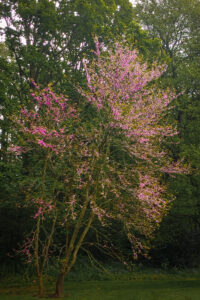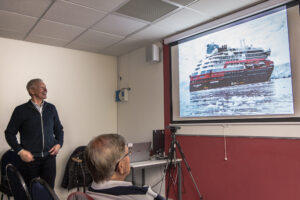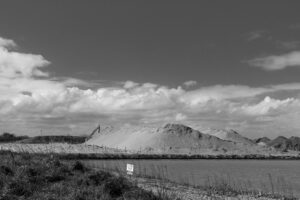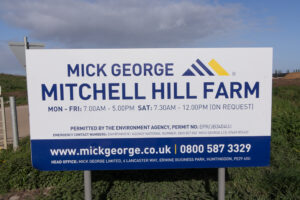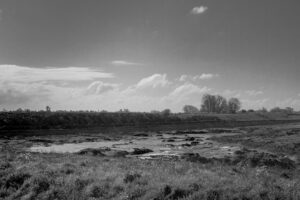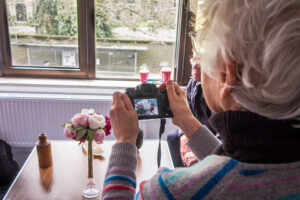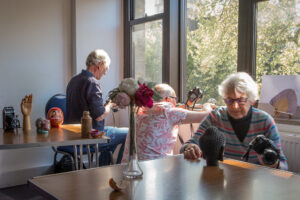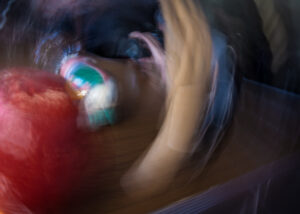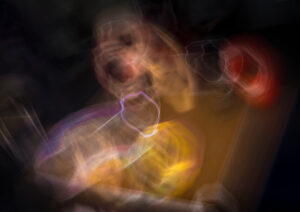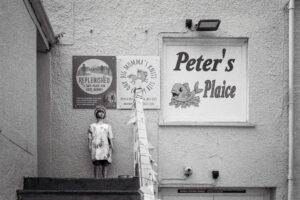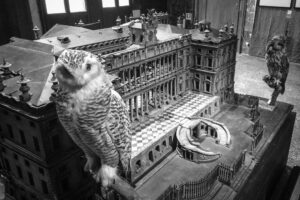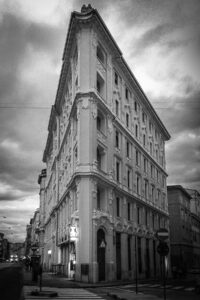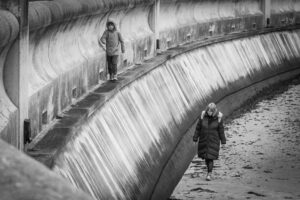-
Recent Posts
Recent Comments
- Brian on Karl Parsons
- Drew Landsborough on Karl Parsons
- Brian Human on Perfect Days
- Roy on Perfect Days
- Brian Human on Cream Tea
- Roy on Cream Tea
- Brian Human on Double Exposures
- Roy on Double Exposures
- Brian Human on Photo Wallets
- Annebella Pollen on Photo Wallets
Archives
- April 2024
- March 2024
- February 2024
- January 2024
- December 2023
- November 2023
- October 2023
- September 2023
- August 2023
- July 2023
- June 2023
- May 2023
- April 2023
- March 2023
- February 2023
- January 2023
- December 2022
- November 2022
- October 2022
- September 2022
- August 2022
- July 2022
- June 2022
- May 2022
- April 2022
- March 2022
- February 2022
- January 2022
- December 2021
- November 2021
- October 2021
- September 2021
- August 2021
- July 2021
- June 2021
- May 2021
- April 2021
- March 2021
- February 2021
- January 2021
- December 2020
- November 2020
- October 2020
- September 2020
- August 2020
- July 2020
- June 2020
- May 2020
- April 2020
- March 2020
- February 2020
- January 2020
- December 2019
- November 2019
- October 2019
- September 2019
- August 2019
- July 2019
- June 2019
- May 2019
- April 2019
- March 2019
- February 2019
- January 2019
- December 2018
- November 2018
- October 2018
- September 2018
- August 2018
- July 2018
- June 2018
- May 2018
- April 2018
- March 2018
- February 2018
- January 2018
- December 2017
- November 2017
- October 2017
- September 2017
- August 2017
- July 2017
- June 2017
- May 2017
- April 2017
- March 2017
- February 2017
- January 2017
- December 2016
- November 2016
- October 2016
- September 2016
- August 2016
- July 2016
- June 2016
- May 2016
- April 2016
- March 2016
- February 2016
- January 2016
- December 2015
- November 2015
- October 2015
- September 2015
- August 2015
- July 2015
- June 2015
- May 2015
- April 2015
- March 2015
- February 2015
- January 2015
- December 2014
- November 2014
- October 2014
- September 2014
- August 2014
- July 2014
- June 2014
- May 2014
- April 2014
- March 2014
- February 2014
- January 2014
- December 2013
- November 2013
- October 2013
- September 2013
- August 2013
- July 2013
- June 2013
- May 2013
- April 2013
- March 2013
- February 2013
- January 2013
- December 2012
- November 2012
- October 2012
- September 2012
- August 2012
- July 2012
- June 2012
- May 2012
- April 2012
- March 2012
- February 2012
- January 2012
- December 2011
- November 2011
- October 2011
- September 2011
- August 2011
- July 2011
- June 2011
- May 2011
- April 2011
- March 2011
- February 2011
- January 2011
- December 2010
- November 2010
- October 2010
Categories
- 100 Photographs
- Anglesey Abbey
- Blue Rope
- Cafes
- Cambridge
- Covid 19
- Endings
- Erewhon
- Fen Landscape
- Figures
- Film
- Film Ends
- In Plain View/Light
- Joan Leigh Fermor
- Land Sea Sky
- Mining the Diaries
- Only Colour
- Photography in Fiction
- Remains
- Ruckenfigur – Rear View
- Shingle Street
- Silent Figures
- Street Photography
- Take a Seat
- The Beechwoods
- The Mani
- Travellers
- Travels
- U3AC Photography Courses
- Uncategorized
- Undertow
- Urban Ephemera
- Venice
- Voyage Round My Room
- Walking
Meta
U3AC Photo Forum 2023-24 – Week 22 Michael Morrish in Antarctica
Mike spoke about his recent trip to the far south: Buenos Aires – Ushuaia – Antarctic Peninsular – Port Stanley. Photographic challenges: temperature and cumbersome clothing; choice of seating in the Zodiac dinghy; biosecurity on the Peninsular; snow and judging exposure; uncooperative whales (or failure to anticipate them); conveying the sense of scale; and too many penguins (featured in 13 of the slides he presented). Despite the challenges he came back with over 1,000 pictures – i-phone used more than DSLR.
Fen Landscape – Mitchell Hill Farm 2
There is another gate opposite the entrance to the mineral workings. It opens onto a concrete road that runs east across Chestnut Farm land to the Amey Waste Management Park, which is accessed from the A10. This allows heavy vehicles to access the site without going through Cottenham or Wilburton.
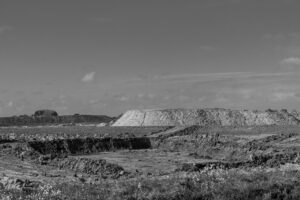
Fen Landscape – Mitchell Hill Farm, Cottenham 1
I’ve been intrigued for several years by the embankment that has been thrown up along the east side of the Twenty Pence Road, Cottenham, as it approaches the bridge over the Great Ouse. Signs on the top warn of deep excavations. I assumed mineral working was going on out of sight, something not uncommon in this part of Cambridgeshire. I have recently read Joseph Koudelka – A Visual Biography by Melissa Harris, which includes a description of his photography of the landscape blighted during the construction of the Channel Tunnel in the late 1980s (part of the Mission Photographique Transmanche). This set me to thinking that I should try to photograph this corner of the Fens as part of my long-term landscape project.
The site is known as Mitchell Hill Farm. Permission was given for the extraction of 1.7 million tonnes of sand and gravel over a site of some 72 acres in 2018. Subsequent consent has been granted for the deposit of circa one million cubic metres of suitable inert waste material there. This recovery operation will progressively restore the quarried site back to agricultural use as well as wet grassland for nature conservation.
I took Long Drove out of Cottenham to the site on the 21st April to get some insight into what is going on and to try to take some photographs. It looked a blighted and blasted landscape in a palette of black, grey and brown, a chaos of workings that appeared to have no logic to the outsider, the uninitiated. It was impossible to do any serious photography without getting access to site, but some pictures from Long Drove give an impression of what is going on behind that embankment, an alternative Fen landscape.

The Bather
The Bather, Albert Toft, 1915, Victoria and Albert Museum.
Toft (1862-1949) was an apprentice at the Wedgewood factory where his father was the principal modeller. He studied at the National Art Training School (later the Royal College of Art). A critic described this work as ‘subtly yet powerfully modelled’ in 1915.
U3AC Photo Forum 2023-24 – Week 21 Creative 2
Today’s class was run as a practical workshop to try out creative in-camera techniques, such as double exposure, zoom burst, rotation burst, intentional camera movement and high dynamic range, introduced by Tim Ewbank at the end of last term. We brought a bric-a-brac collection of props, including a Lensball, to photograph.
My Canon G1X camera has a limited range of clever functions needed for some of the techniques, so I concentrated on intentional camera movements. I set the camera at ISO 100, which gave an exposure of 1 second at f11-16. The results were a more or less abstract set of images, not unlike the accidental ones used in my photo book Endings.
As an exercise, it showed the undoubted benefits of digital photography – lots of shots at no cost and instant review of results. It would be impossible to run a one-and-a-half-hour session like this using film.


White Tara (Sitatara)
White Tara (Sitatara), Malla Period, 1300-1400, Victoria and Albert Museum.
Tara was widely worshipped in Nepal and Tibet. She is referred to as the Wisdom Goddess, the Embodiment of Perfected Wisdom, the Goddess of Universal Compassion and the Mother of all Buddhas. The figure has the attribute of the lotus above her left shoulder. She makes the gesture of preaching with her raised hand.
St Davids
Mining the Diaries 102: Wales
Arosfa, Goat Street, St Davids, Pembrokeshire, 20th June 2023.
Jane went to Narberth to see friends, so I had a day to myself, a chance to explore St Davids. Despite this being my fourth visit, I don’t feel that I have seen much of the City (really just a large village), apart from the area around Goat Street, because we have always given preference to the beaches and the cliff walks.
I strolled up the sunny High Street to the information centre. It offered the usual selection of books, crafts, souvenirs and not very inspiring work by a local artist in the gallery. Back down in Cross Square I stopped at the Caerbwdi Cafe for morning coffee and a slice of bara brith and wrote postcards sitting in the busy courtyard. Controversy surrounds the café: Friends of the Cathedral spent a lot converting it thinking it might be a money spinner, but it failed and had to be taken over by a private operator.
Going along Nun Street, I took Quickwell Hill down into the valley of the River Alun and found the exotic Round House, looking for all the world like a piece of Art Deco architecture. In fact it was built in 1965 by James Gowan of the Stirling and Gowan architectural partnership, for E W Parke, Professor of Engineering at Leicester University. It is listed Grade II.
The road continued deep into the shade of the trees and I took the narrow drive climbing up on the right to the cemetery. Beyond the lodge at the top the graves spread over the open hillside in two halves: older, pale lichen-flecked stones on one side; new, shiny black marble or granite stones on the other. There were no trees or planting (the westerly winds are unkind to trees planted in exposed places here), it all looked rather bare and forlorn.
I returned to Nun Street and carried on through mini suburbs, past the St Davids Rugby Club, to the Travel Lodge (another controversy about an unwanted chain hotel). It has a distinctly modern appearance in black, grey and white with token panels of traditional Welsh stone. Architecturally it’s of a part with the nearby modern houses, which were built as a condition of the planning consent. I strolled into the reception, which was deserted, as was the bar and restaurant, like the Marie Celeste. I used the toilet, took a drink from the iced water on the bar and left – presumably all caught on camera. There was no sign of life apart from a few cars in the car park. Does anyone stay more than two or three nights?
I headed south on exposed Glasfryn Road, which acts as a bypass linking the main roads to Fishguard and Haverfordwest, modern houses on my right and a business park on the left. A blissfully shaded lane on the right led directly to New Street.
After lunch at the Really Wild Emporium – tomato soup with wild garlic that gave it an unusual taste, not unpleasant – I went down The Pebbles, where visitors of all ages rested, snapped the Cathedral and ate ice creams. Dog owners cooled off their pets in the Alun by the Bishops Palace.
An enjoyable ramble, confirming that, aside from the Cathedral and the Bishop’s Palace, St Davids is not distinguished architecturally. The Round House was a highlight though, and the index of British Listed Buildings says it is: ‘One of the very few frankly modern houses in west Wales and important in the later development of the International Modern style in Britain … the flat roof was said to have the additional purpose of facilitating the testing of structural materials against salt air for Professor Parke’s researches.’
This day in St David’s brings to an end Mining the Diaries, which started in Tossa de Mar on 27th July 1968, posted on 14th August 2022. There will be other trips that will bring their own special experiences, but having just passed the century mark, the first phase of this blog based project is complete. The second phase is going to be making a book combining the words and pictures. The easy way would be to simply import what has appeared here, I would like to make it more of a memoir, however. I’m not sure how best to achieve this, but four things occour to me: set the wider context of the holiday/day; mention travelling companions; fill out historical and geographical details; and top and tail each entry to create a narrative.
Venice
Mining the Diaries 101: Italy
Casa Accademia, Fond. Bragadin 624, Venice, 20th May 2023
Awake early, I read for a bit (Where My Feet Fall, Duncan Minshull), though not really focusing. A blackbird had called in the dawn. Showered, out by 6.20 and walked up to the Accademia Bridge for the ritual that was the reason for my being there.
I stood on the top of the bridge remembering the times Nina and I had watched the sunrise and sipped champagne – such happiness. Today it was quiet, a few early people hurrying to work, a lone vaporetto coming down the Grand Canal. I took the little box of Nina’s ashes from my bag, kissed it and dropped it into the water facing where the sun had once risen to greet us. It went under momentarily, bobbed back up like a final wave goodbye and floated very slowly towards the sea for half a minute before sinking out of sight in the grey-brown water. ‘Goodbye, my flower,’ I whispered. Eight swifts wheeled overhead calling.
I set off into Dorsoduro in search of coffee, but found nowhere open, though I could smell the comforting sweetness of croissants cooking. Café owners were putting out chairs on the Campo S. Barnabas; workmen swept up last night’s detritus on the Campo S Margherita, napkins, bottles, cigarette ends and plastic glasses with the sour smell of stale beer. Herring gulls foraged for scraps and a song thrush sang from high up on an aerial. A dozen swifts skimmed overhead. I walked as far as Fondamenta Del Gaffaro and retraced my footsteps.
Then, delight. Il Caffe Rosso was opening! I waited for the first customers have their espresso shots, went in and ordered coffee and an apricot croissant and sat quietly at a table in the back. So, coffee at our favourite place, time to reflect on the good years after leaving the ashes: perfect. Whatever else happens, this sentimental journey will have been a success. I left as the staff were preparing food for the day to Reggae music. Outside the fish and veg sellers were setting up their stalls.
Then it was back to the reality of this trip, joining D for breakfast at the hotel. We were out promptly to get to the Guggenheim Museum when it opened at ten o’clock. It was another place that was very busy and hence a spoiled experience. Still, it has much that was worth seeing and is a good introduction to 20th century art; with some of it 80-90 years old, I wondered if it can still be called ‘Modern’. The café there has curious shaped teaspoons. A customer tried to pocket one as he left. The waitress spotted him, said, ‘My spoon, please’, very loudly and took it from him.
We left without spoons and took the vaporetto to San Angelo for the Museo Fortuny, which was on my list of places I wanted to revisit. I felt that it had changed – fewer curios and more paintings, especially nudes, or so it seemed, a feeling reinforced by occasional re-reading of Art Tempo. I was pleased to go back though; it remains an atmospheric celebration of the beautiful, the curious and the weird.
Ravioli for lunch. It rained. D went to San Marco. I couldn’t face the crowds there and returned to the hotel to write and reflect on this ineffable place that meant so much to Nina and me – ten previous visits together and this will be my last.
Trieste
Mining the Diaries 100: Italy
Hotel Roma, Via Carlo Ghega, Trieste, 16th May 2023
A return to Trieste after twenty-one years. We landed at Ronchi dei Legionari mid-morning and, after a battle of wills with the ticket machine, boarded the bus for Trieste. It was a forty-five minute ride south-east to the city, with detours to towns and villages along the way to drop off and pick up passengers. The last leg from Sistiana followed the scenic coast along the Gulf of Trieste into the railway station.
It was a short walk to the Hotel Roma, which I realised was where I had stayed in 2003, though it was now much expanded and smarter – pure coincidence as D had made the booking. We were in spacious three-bed rooms in a block opposite, each had a kitchen space, like an apart-hotel.
We refreshed ourselves with pizza and beer at a fast food café fifty yards down the road, the first place we came to, cheap, cheerful and very local.
Fortified, we set off on an ambling tour, taking the Via Roma down to the Grand Canal (a misnomer once one has been to Venice), onto the quayside along the Riva Tre Novenbre, past the grand Piazza Unita d’Italia, making a loop around the streets to the south, then back across the Unita. The grandness and beauty of Trieste are enshrined in the imposing, not to say self-important, financial services company buildings built at the height of the Austro Hungarian fin de siècle prosperity. Four churches made impressions: the 17th century Church of the Blessed Virgin of the Rosary, with a strange all-seeing eye motif above the door and a glazed niche filled with glittering votive offerings; the late 18th century Church of the Blessed Virgin of Help; the early-mid 19th century church of Sant’Antonio Taumaturgo, in neo-classical Ionic style overlooking the eponymous piazza; and the Byzantine styled Serbian Orthodox Temple of the Holy Trinity and St. Spyridon from 1869 (closed and a must visit for later).
It was not all grandeur. Rigatteria, in Via Malcanton, otherwise known as Laura and Claudio Di Pinto’s Junk Shop, was a jumbled Wundercammer of furniture, antiques, paintings, prints, books, curiosities and objects d’art. And there were the sell-all shops, usually Chinese-run. They caught our eyes with displays of curious and colourful of geegaws, then revealed themselves as bazaars for all needs. Want a watch, a radio, a scarf, a fishing reel? Come in. Maybe a bra, a bag, a harmonica, an abacus, a Barbie doll, a micrometer, a snow dome or a blood pressure monitor? Yes. Curious phenomena, they sat under the towering Empire facades of the late 19th century. Yet, they oddly echoed that time. Jan Morris in Trieste and the Meaning of Nowhere wrote: ‘At first it [Trieste] was essentially an emporium, a market-place where goods brought by land or sea were assembled for sale, and then sent off again – a kind of permanent trade fair, with transport facilities.’
Everywhere seemed very quiet, maybe it was the cold buffeting wind that kept people indoors. I wondered if it wsa the Bora; D suggested the Sirocco. We checked on the wind rose at the end of the Molo Audace, but it was ambiguous.
Dinner was goulash and potatoes and beer and at Buffet & Birreria Rudy, Trieste joining Bavaria in a successful marriage.
To bed with a feeling that, so far, I’m less taken with Trieste than last time – it seems like any busy medium size city with a mix of ordinary and fine building and a lot of traffic. Maybe it’s just the ambling with someone else – last time I came by alone with more focus and a list of things to do after reading Jan Morris and had only myself to please. The weather was better – everything looked finer in the sun. And twenty years have taken their toll on both Trieste and me.
Durga as Mahisasuramardini
Durga as Mahisasuramardini, Hoysala period, 1240-60, Victoria and Albert Museum.
The goddess Durga represents the shakti or female energy of the god Shiva. Here she is shown in her ferocious form as the slayer of the shape-shifting demon Mahishasura. She kills him as he emerges from his buffalo guise. The flamboyant style of the figure is characteristic of the Hoysala dynasty in southern Karnataka, India.
Margate
Mining the Diaries 99: England
Flat 2 57 Kingsgate Avenue, Margate 11th November 2022
We drove to Margate, parked in Westbrook, climbed down onto the Westbrook Promenade and walked east in the shadow of the former Royal Sea Bathing Hospital. Dr John Coakley Lettsom, a Quaker physician founded the Hospital in 1791 for the treatment of scrofula (a disease of the cervical lymph nodes associated with tuberculosis). The Hospital ceased treating TB patients in the early 1950s. The original buildings date from 1793-96, but are now almost lost among the accumulated developments between 1816 and 1880 that created the huge pile dominating Westbrook. It has now been converted to apartments. We carried on past a group of stylish modern houses, a range of rather tatty amusements and a double decker bus doing duty as a café. The fine Royal Crescent (1856), part houses part hotel reflecting more prosperous times, looked imperiously out to sea. The hotel appeared deserted and abandoned and must present a formidable renovation challenge.
We took the slipway onto the beach; it was low tide and the Walpole Bay sea bathing pool stood above the sand on seaweed-green walls, at four acres it’s the largest sea bathing pool in the UK. A few desultory figures walked and exercised their dogs on the firm sand; and a lone mother and child sat making sandcastles. The sea wall, streaked like an abstract expressionist painting, offered an irresistibly precarious walk for a small boy. We strolled out along curve of the Harbour Arm Stone Pier to the lighthouse (1955) and the Shell Lady. The Shell Lady, more properly ‘Mrs Booth’, was created in 2008 by sculptor Ann Carrington as a tribute to Sophie Booth, landlady and lover to J.M.W. Turner.
Morning coffee and Portuguese custard tart (pastel de nata, who introduced them and when? – I never saw them in England five years ago) at the Coffee Company. Then to the Turner Contemporary for Next Fantastical Worlds, a collaboration between Year 8 students at Royal Harbour Academy and Project Motorhouse inspired by pop-up books and Alice in Wonderland. Twenty-one 21 students took part in workshops with photographer Tim Topple and artist Christopher Tipping. The group experimented with surreal photography, performance, and collage to reimagine Ramsgate. Both familiar and dreamlike, the artwork wove together real-life stories and fantastical events to create an otherworldly vision of their stuffy home town. Engaging and cleverly put together.

